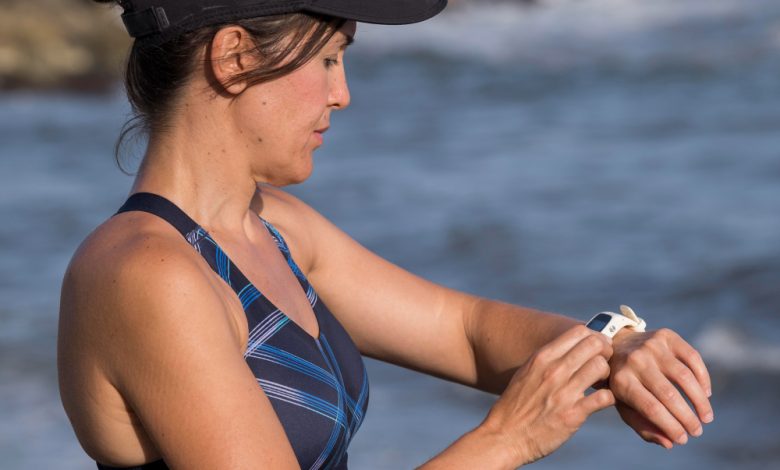Can you swim with a Fitbit?The Truth About Water Resistance in Every Model

Summary: Wondering if your Fitbit can handle swimming, showers, or even a dip in the pool? This guide breaks down water resistance ratings for every Fitbit model, explains how to use your device safely in water, and shares maintenance tips to avoid damage. Whether you’re a swimmer, gym enthusiast, or just love wearing your tracker 24/7, this article will help you maximize your Fitbit’s lifespan while avoiding costly mistakes.
1. Is Your Fitbit Waterproof or Just Water-Resistant?
Let’s clear up the confusion: no Fitbit is fully waterproof. Instead, most models are water-resistant, meaning they can withstand splashes, rain, or submersion to specific depths. Fitbit uses terms like water-resistant up to 50 meters (5 ATM) for devices like the Fitbit Versa 3, Charge 5, and Sense. This rating means they’re safe for swimming in pools or shallow water but not for high-pressure activities like diving.
The distinction matters because “waterproof” implies indefinite protection, while water resistance has limits. For example, the Fitbit Inspire 2 and Ace 3 are splash-proof but not designed for swimming. Always check your device’s specs in the Fitbit Help Center to confirm its capabilities.
2. Which Fitbit Models Are Safe for Swimming?
Not all Fitbits are built for the pool. Models like the Versa 3, Sense, and Charge 4 have 50m water resistance, making them ideal for swim workouts. These devices include swim tracking features to log laps, calories burned, and duration. The Versa 2 and Ionic also support swimming but lack advanced metrics like stroke detection.
Avoid older models like the Charge HR or original Inspire, which are only splash-resistant. For kids, the Fitbit Ace 2 withstands splashes but isn’t meant for submersion. Always activate water lock mode (available on newer models) before swimming to prevent accidental screen taps.
3. Can You Shower with Your Fitbit On?
Yes, most water-resistant Fitbits can handle the shower, but with caveats. Hot water, steam, and soap can degrade seals over time. The Fitbit Care Page advises rinsing your device with fresh water and a soap-free cleanser after exposure to shampoo or conditioner. Avoid harsh products like exfoliants, which may cause skin irritation or damage the tracker.
If your Fitbit has a fabric band, remove it before showering to prevent odor buildup. Silicone bands dry faster and are more hygienic for daily wear.
4. How Does Fitbit’s Water Resistance Work?
Fitbit uses ATM (atmosphere pressure) ratings to define water resistance. A 50m (5 ATM) rating means the device can handle static water pressure equivalent to 50 meters depth—perfect for swimming but not diving. Sensors and seals protect internal components, but these degrade with time, especially after exposure to salt water or chlorine.
Newer models like the Versa 4 and Google Pixel Watch (which integrates Fitbit software) include improved seals. However, water resistance isn’t permanent. Fitbit recommends avoiding extreme temperatures, like saunas or hot tubs, which can warp materials.
5. What Water Activities Should You Avoid?
Even water-resistant Fitbits have limits:
- Saltwater and chlorine: Rinse your device immediately after swimming to prevent corrosion.
- High-pressure water: Avoid jet showers, water skiing, or scuba diving.
- Hot tubs and saunas: Heat and steam can weaken adhesives and seals.
- Soaps and lotions: These substances clog sensors and degrade water resistance.
The Fitbit Community forum is filled with stories of devices failing after hot tub use. Stick to fresh water and shallow depths for safety.
6. How to Track Swimming Workouts with Your Fitbit
For swimmers, devices like the Versa 3 and Sense auto-detect swims via SmartTrack. To manually log a session:
- Open the Exercise app and select Swim.
- Activate water lock to disable the touchscreen.
- Post-workout, sync to view laps, pace, and calories burned.
The Charge 5 adds a SWOLF score (swim efficiency metric), while the Versa 3 tracks pool lengths based on arm movements. For open-water swims, use GPS-enabled models but avoid waves or strong currents.
7. Maintaining Your Fitbit After Exposure to Water
Post-swim care is critical:
- Rinse the device under fresh water to remove chlorine or salt.
- Dry it thoroughly with a lint-free cloth.
- Remove the band and clean the crevices to prevent mildew.
Avoid charging until the port is completely dry. If your Fitbit gets wet accidentally, place it in a bowl of uncooked rice to absorb moisture—though this isn’t officially endorsed by Fitbit.
8. Debunking Myths About Fitbit Water Resistance
Myth 1: “All Fitbits are waterproof.”
Reality: Only select models are swim-proof.
Myth 2: “Water resistance lasts forever.”
Reality: Seals wear down over time. Replace your device every 1–2 years if frequently exposed to water.
Myth 3: “You can wear Fitbits in the sauna.”
Reality: Extreme heat voids warranties and damages internal parts.
9. What If Your Fitbit Gets Water Damaged?
Signs of damage include foggy screens, unresponsive buttons, or erratic data. If your device fails:
- Contact Fitbit Support—some models have a one-year warranty.
- Check if your issue is covered in the Fitbit Community troubleshooting guides.
- For out-of-warranty devices, consider a replacement or upgrade.
Note: Water damage isn’t always covered, so prevention is key!
10. Fitbit Water Resistance FAQs
Q: Can I swim with my Fitbit in the ocean?
A: Yes, but rinse it afterward to avoid corrosive salt water damage.
Q: Does water resistance apply to all bands?
A: No—leather or metal bands aren’t designed for swimming. Stick to silicone.
Q: Can I dive with my Fitbit?
A: No. No Fitbit is rated for deep-sea diving or high-pressure water.
Key Takeaways
- ✔️ Swim-proof models: Versa 3/4, Sense, Charge 4/5.
- 🚫 Avoid: Hot tubs, saunas, and harsh chemicals.
- 💧 Rinse after swimming: Use fresh water to remove chlorine/salt.
- 🔒 Activate water lock: Prevents screen mishaps during workouts.
- 📉 Water resistance fades: Replace older devices if seals degrade.
For detailed specs, visit the Fitbit Help Center or join discussions in the Fitbit Community to share tips with fellow users!

